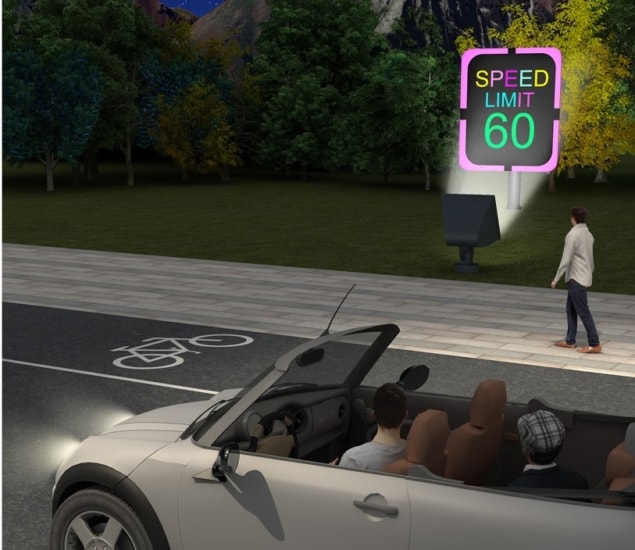
Physicists in China and the US have created a retroflective material from uniform microspheres that are partially embedded in a sticky transparent film. The team, led by Limin Wu at Fudan University in Shanghai, showed that the highly tuneable film can be made to display different colours depending on the motion of an observer. The researchers believe their material could allow for road-safety improvements benefiting both drivers and pedestrians.
From butterfly wings to photonic crystals, a wide variety of both natural and artificial materials exploit nanometre or micron-sized structures to create vibrant “structural colours” when illuminated.
Recently, physicists have attempted to use such materials to create smart displays. This has been a significant challenge, however, because structural-colour materials have long-range periodic order. This means that the perceived colours change according to the angle at which a material is observed – an effect called iridescence. As a result, such displays could only be viewed within a limited range of angles.
Wider viewing range
A wider viewing range can be achieved by using structures with shorter-range order, but these tend to be darker and the colours less saturated, making them unsuitable for displays.
Wu’s team propose a solution that employs structural retroflective materials, which reflect light back towards its source regardless of the angle of incidence. In their study, the researchers created such a material by partially embedding a monolayer array of polymer microspheres in a sticky layer of transparent tape.
Within this structure, thin-film interference occurs at the sphere-film interface when the material is illuminated. Combined with the differences in total internal reflection occurring on the embedded and unembedded portions of the sphere surfaces, the effect allows the team to achieve highly-tuneable structural colouration in the retroflected light.
Moving illumination
Wu and colleagues demonstrated the capabilities of their material by using it to coat a speed limit sign, and to create roadside markers. When illuminated with a uniform white light, the material can be tuned to be reflect light of different colours in certain directions. This is done by varying the diameters of the spheres. This means that while the colour of the objects remains stable from the perspective of a driver in a fast-moving car, the combined illumination of a static white-light source and moving headlights causes them to flicker when viewed by a pedestrian.
The team believe their material could soon be used to create smart road signs that deliver colour-coded signals to night-time drivers, while alerting pedestrians to fast-moving vehicles.

A flower’s nano-powers
“If a person is listening to loud music or isn’t paying attention while they’re walking or driving, a colour-changing sign can help to better alert them,” explains team member Qiaoqiang Gan of the University at Buffalo, New York.
By studying more sophisticated film structures, the team hopes to develop materials for applications including advertisement displays, window coatings, anti-counterfeiting technologies, and novel forms of artistic decoration.
The research is described in Science Advances.



